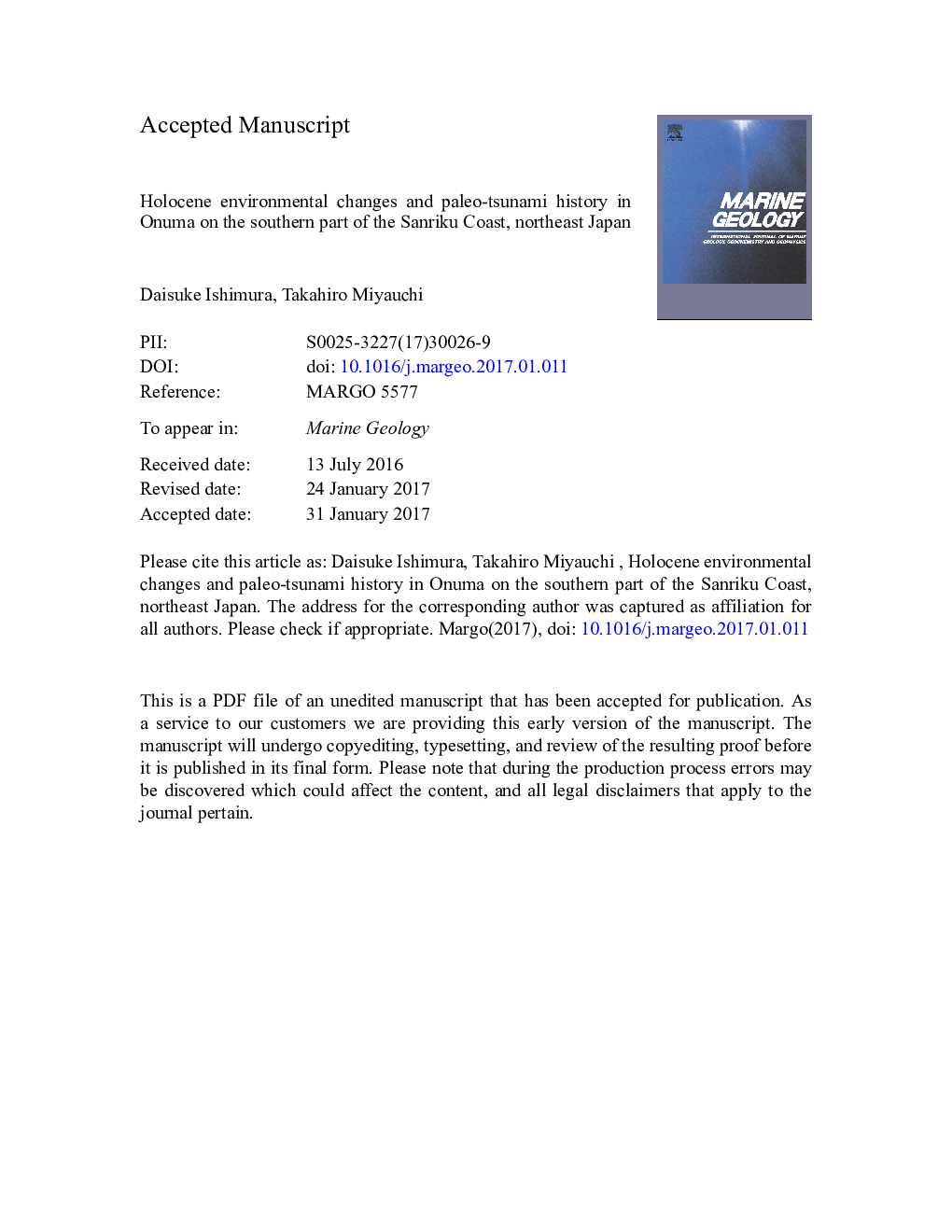| کد مقاله | کد نشریه | سال انتشار | مقاله انگلیسی | نسخه تمام متن |
|---|---|---|---|---|
| 5784517 | 1639066 | 2017 | 77 صفحه PDF | دانلود رایگان |
عنوان انگلیسی مقاله ISI
Holocene environmental changes and paleo-tsunami history in Onuma on the southern part of the Sanriku Coast, northeast Japan
دانلود مقاله + سفارش ترجمه
دانلود مقاله ISI انگلیسی
رایگان برای ایرانیان
کلمات کلیدی
موضوعات مرتبط
مهندسی و علوم پایه
علوم زمین و سیارات
ژئوشیمی و پترولوژی
پیش نمایش صفحه اول مقاله

چکیده انگلیسی
After the 2011 Tohoku-oki earthquake that occurred off the Pacific coast, significant problems arose concerning the Pacific coastal area (Sanriku Coast) such as the lack of the historical and paleo-tsunami records and the paradox between long-term and short-term vertical crustal movements. The data necessary to solve the issues are also essential for understanding the mechanisms of tsunami generation and earthquakes and assessing the risk of large, low-frequency disasters. Thus, we conducted excavation and coring surveys and reconstructed the paleoenvironment at Onuma on the southern Sanriku Coast, based on sedimentary facies, age data (radiocarbon dating and tephra), fossils (diatoms and mollusks), and topography. First, we discussed the preservation potential of tsunami deposits considering the geomorphologic and geologic evolution of the study area. Subsequently, we identified tsunami deposits and estimated their occurrence ages and inundation height. We discovered six tsunami beds deposited during ca. 5-1 ka when the preservation potential of tsunami deposits was high in the study site. We divided them into two types of deposits-sand and gravel. These deposits reflect different sources and flow processes of paleo-tsunamis. Therefore, we estimated the heights of the paleo-tsunamis that is 5-10 m for sand tsunami deposits (S1-S3 deposits) and > 10 m for gravel tsunami deposits (G1-G3 deposits). The tsunami deposits were dated at 690-1040 BP (S1), 2240-3310 BP (G1), 3320-3630 BP (G2), 3620-4060 BP (G3), 4030-4400 BP (S2), and 4440-5570 BP (S3). This approach and the setting of the study site enabled us to evaluate not only the ages of paleo-tsunami deposits but also the paleo-tsunami heights. Moreover, we estimated the paleo-sea level between 8 and 7 ka based on the sedimentary facies and paleoenvironment deduced from the fossil shells, and calculated the vertical crustal movement during the Holocene at â 0.4 to â 1.0 mm/yr by comparing with the theoretical relative sea-level curve. This information is significant for reconstructing the tectonic evolution along the subduction zone and for paleogeography to estimate the paleo-tsunami magnitudes.
ناشر
Database: Elsevier - ScienceDirect (ساینس دایرکت)
Journal: Marine Geology - Volume 386, 1 April 2017, Pages 126-139
Journal: Marine Geology - Volume 386, 1 April 2017, Pages 126-139
نویسندگان
Daisuke Ishimura, Takahiro Miyauchi,